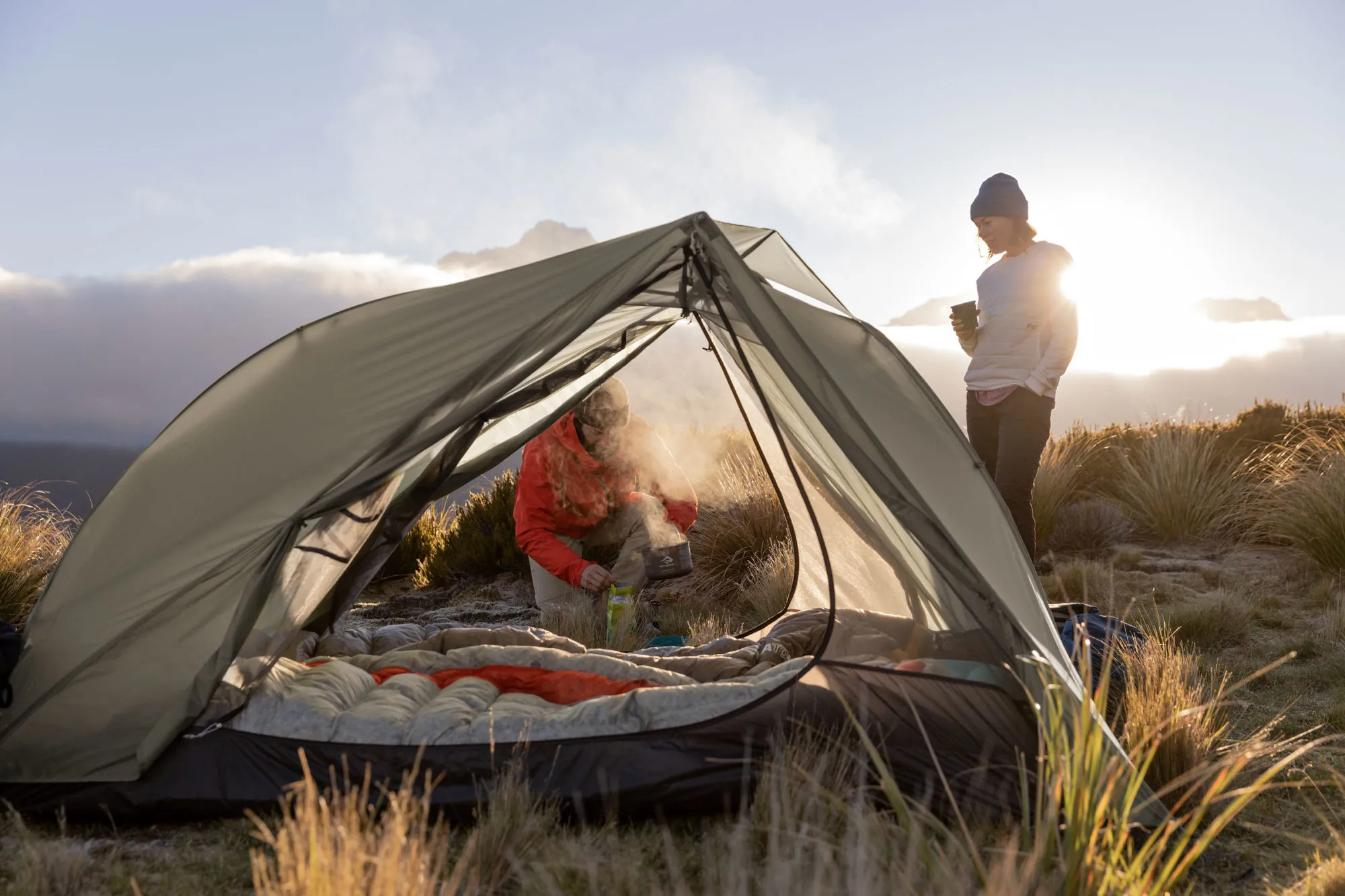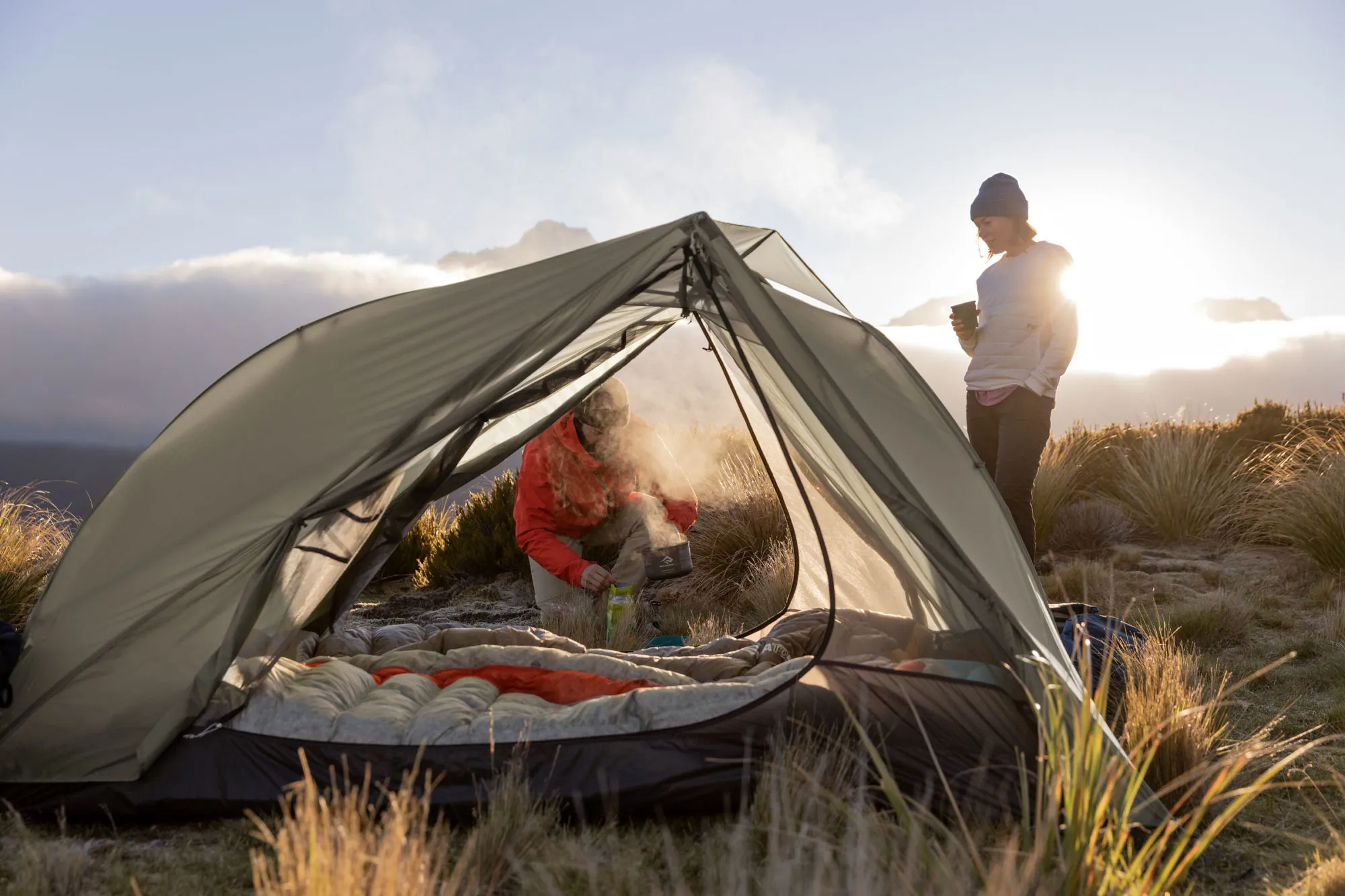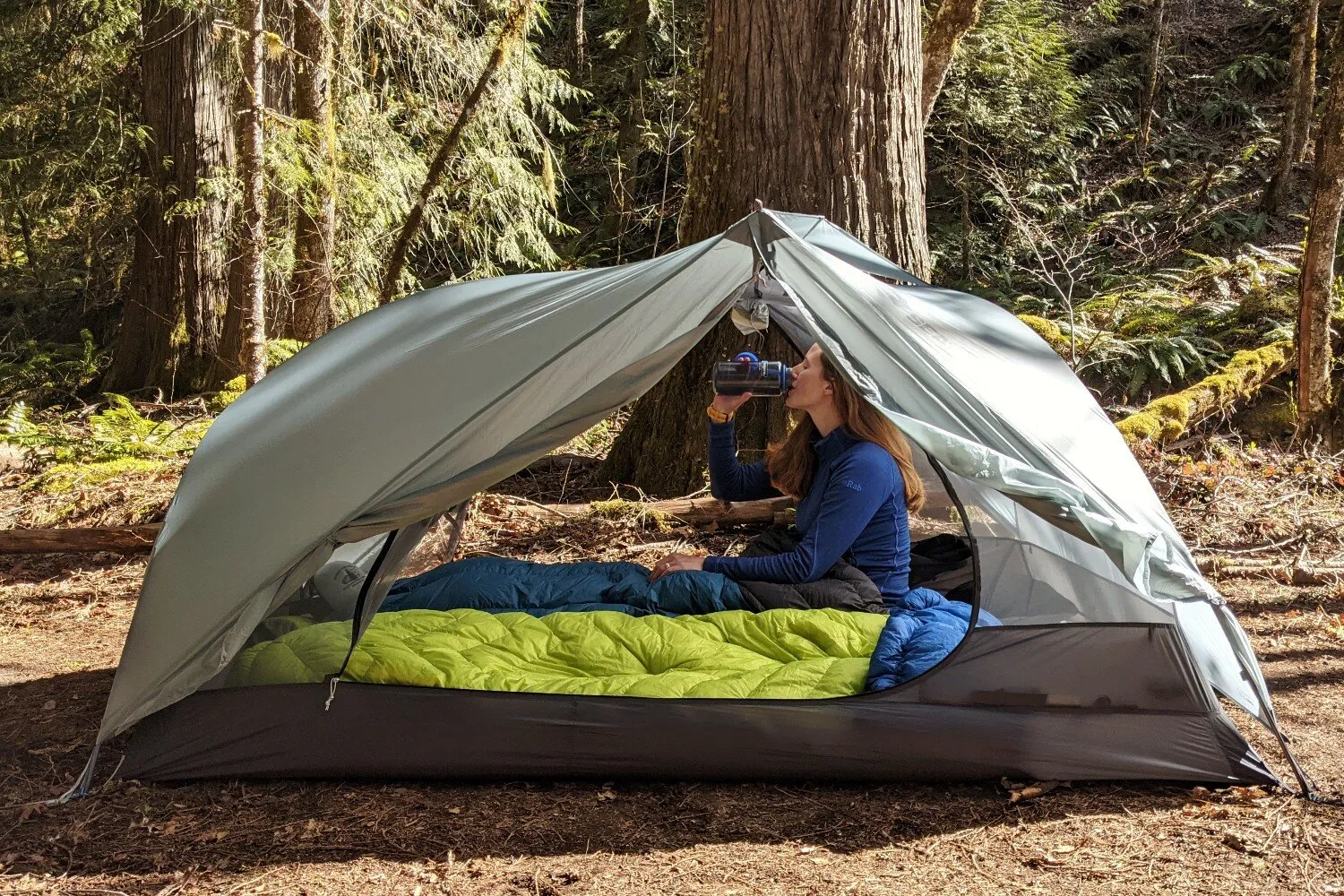
Telos Freestanding Ultralight Tent Review: The Ultimate Guide for Backpackers
After spending over 50 nights in the wilderness testing various ultralight tents, I've discovered why the Sea to Summit Telos freestanding ultralight tent has become the gold standard for serious backpackers. This comprehensive Telos freestanding ultralight tent review will share my real-world experience with this innovative shelter, from storm-weathering performance in the Cascades to space efficiency on crowded alpine ledges. At Nature Guests, we believe in honest, experience-based gear reviews that help you make informed decisions for your outdoor adventures.
Overview: Why the Telos Stands Out
When I first encountered the Sea to Summit Telos freestanding ultralight tent, I was skeptical. After years of testing gear from established tent manufacturers, could this relatively new player in the tent market truly deliver something revolutionary? After extensive field testing across diverse conditions—from the rain-soaked Olympic Peninsula to the wind-battered peaks of the Sierra Nevada—I can confidently say this Telos freestanding ultralight tent review reveals a game-changing shelter.
The Telos TR2 represents Sea to Summit's ambitious entry into the competitive ultralight tent market. Weighing just 3 pounds 11 ounces, this freestanding tent challenges conventional wisdom about what's possible in ultralight design. Unlike traditional ultralight semi-freestanding tents, the Telos achieves full freestanding capability without significant weight penalty.

Key Specifications at a Glance
What sets this tent apart isn't just its impressive weight-to-space ratio, but the innovative Tension Ridge design that maximizes headroom where you need it most. During my testing, I found the Telos consistently outperformed expectations in livability, weather resistance, and setup simplicity. This detailed Telos freestanding ultralight tent review will explore every aspect of this remarkable shelter, helping you determine if it's the right choice for your backcountry adventures.
Revolutionary Design Features
The Tension Ridge System
The crown jewel of the Telos design is its patented Tension Ridge system. Traditional tent architectures feature poles that curve downward from a central peak, creating a mushroom-like profile. The Telos revolutionizes this approach with an inverted V-shaped ridge that curves upward, positioning the tent's highest points directly above each sleeping area.
During my field testing, this design proved transformative for livability. Unlike conventional tents where headroom diminishes toward the edges, the Telos maintains generous space precisely where you sit up most often. I particularly appreciated this feature during a storm on Mount Rainier, where I spent an entire day confined to the tent reading and organizing gear.

Freestanding Versatility
As someone who frequently camps on rocky terrain where staking is challenging, I've grown to appreciate truly freestanding tents. The Telos achieves this without the weight penalty typically associated with robust pole systems. The DAC Featherlight aluminum poles provide excellent strength-to-weight ratio while maintaining the tent's structural integrity.
This freestanding capability proved invaluable during a traverse of the Enchantments in Washington, where finding suitable camping spots often meant compromising on ground conditions. The Telos's ability to stand securely without stakes gave me flexibility other tents couldn't match.
Multiple Setup Configurations
The Telos offers six different setup modes, each optimized for specific conditions:
- Classic Mode: Full tent with rainfly
- Fly-Only Mode: Ultralight tarp configuration
- Dry Setup: Rainfly-first in wet conditions
- Inner-Only: Mesh shelter for bug protection
- Partial Fly: Stargazing with weather protection ready
- Hangout Mode: Tarp shelter with trekking poles
Innovative Storage Solutions
Sea to Summit's attention to detail shines in the Telos's storage system. The tent ships with three color-coded stuff sacks that serve dual purposes. When packed, they organize components efficiently. When deployed, they transform into gear buckets that attach to interior loops, creating surprisingly spacious storage for essentials.
The pole storage sack includes a unique Lightbar feature—a semi-rigid plastic insert that creates a diffused lighting system when you insert headlamps. While initially skeptical of this feature, I found it genuinely useful during evening activities. The even light distribution eliminates harsh shadows and creates a more comfortable interior environment.
Real-World Performance Testing
Weather Protection Performance
My most rigorous test of the Telos came during a three-day storm cycle in the North Cascades. Sustained winds of 35-40 mph with gusts exceeding 50 mph, combined with driving rain, provided the ultimate proving ground for this Telos freestanding ultralight tent review. The tent's performance was exemplary, with the Tension Ridge system actually improving stability compared to traditional designs.
The apex vent proved its worth during this storm, effectively managing condensation even with two occupants during extended periods of confinement. While some reviews mention occasional leakage through this vent, proper tension adjustment and understanding of its operation prevented any issues in my testing.

Durability Assessment
After 50+ nights of use across various terrains, the Telos shows minimal wear. The 15-denier rainfly and 20-denier floor represent a thoughtful balance between weight savings and durability. I've used the tent extensively without a footprint on rocky surfaces with only minor scuffing.
The DAC aluminum poles have proven exceptionally robust, showing no signs of stress or fatigue despite numerous setups in challenging conditions. The tent's overall construction quality matches or exceeds established competitors like the Nemo Dragonfly OSMO.
Ventilation and Condensation Management
The Telos's ventilation system deserves special mention. The combination of mesh panels, apex vent, and strategic airflow design creates excellent air circulation. During summer conditions in the humid Pacific Northwest, I experienced significantly less condensation compared to single-wall shelters and many traditional double-wall tents.
The apex vent operates via a unique zipper system that allows precise airflow control. While accessing the vent requires reaching outside the inner tent, the benefit of targeted ventilation at the condensation collection point outweighs this minor inconvenience.
Space Efficiency and Livability
The Telos's 28 square feet of floor space might seem modest on paper, but the Tension Ridge design creates surprisingly generous livability. The tent's tapered design (53 inches at the head, 43 inches at the foot) accommodates two standard sleeping pads comfortably while maximizing headroom where needed most.
I found the dual vestibules particularly valuable for gear organization and weather protection. Each vestibule provides approximately 8 square feet of covered storage—sufficient for a full backpack plus boots and other essentials. The large, high doors make entry and exit remarkably easy, even with gear scattered in the vestibules.
Setup and User Experience
Setup Simplicity and Speed
Despite its innovative design, the Telos proves surprisingly intuitive to set up. The color-coded pole system eliminates guesswork, while the Quick Connect feet make rainfly attachment effortless. After the initial learning curve, I consistently achieved setup times under 5 minutes—competitive with much simpler tent designs.
The freestanding design significantly reduces setup complexity compared to trekking pole or guy-line dependent shelters. This advantage becomes particularly apparent in challenging conditions where fumbling with stakes and guy lines in wind and rain can be problematic.
Packing and Organization
The three-bag system initially seemed gimmicky, but field experience revealed its practical benefits. Being able to distribute components between partners or pack poles internally while keeping the fly external during wet conditions proves genuinely useful.
However, repacking can be challenging when the rainfly is wet and expanded. The bags require precise folding techniques to achieve proper fit, and rushed packing often results in bulky, oversized packages that don't fit well in backpacks.
User-Friendly Features
Sea to Summit's attention to user experience shines throughout the Telos design. The large, curved zippers operate smoothly even with gloved hands, while the interior organization system keeps essentials accessible. The Lightbar feature, while initially seeming unnecessary, provides genuinely useful ambient lighting.
The tent's versatility extends beyond basic shelter. The various setup modes cater to different conditions and preferences, though I found myself primarily using the classic configuration with occasional forays into fly-only mode during clear weather.
Learning Curve and Tips
While the Telos is relatively intuitive, optimal performance requires understanding its unique features. Key tips from my extensive testing:
- Practice the Tension Ridge deployment before your first trip
- Don't over-tighten corner tensioners—this can cause water intrusion
- Use the apex vent proactively rather than reactively
- Master the packing sequence for consistent results
- Consider the footprint for rough terrain protection
Comparisons with Top Competitors
Telos vs. Big Agnes Copper Spur UL2
Having extensively tested both tents, I can offer direct comparisons based on real-world experience. The Copper Spur UL2 remains the gold standard for ultralight freestanding tents, but the Telos challenges its supremacy in several key areas.
Telos Advantages:
- Superior headroom and livability
- More versatile setup options
- Better ventilation system
- Innovative storage solutions
Copper Spur Advantages:
- Lighter weight (3 lbs vs 3 lbs 11 oz)
- Larger floor area (29 sq ft vs 28 sq ft)
- Proven track record
- Simpler packing system
Telos vs. Sea to Summit Alto TR2
Sea to Summit's own Alto TR2 provides an interesting point of comparison. The Alto sacrifices the freestanding design for lighter weight (2 lbs 16 oz) but requires more setup complexity and site selection constraints.
For most backpackers, the Telos's additional weight penalty is justified by its superior versatility and ease of use. However, dedicated ultralight enthusiasts willing to accept setup complexity might prefer the Alto's weight savings.
Competition Analysis Summary
This Telos freestanding ultralight tent review reveals a shelter that carves out a unique niche in the competitive ultralight market. While not the absolute lightest option, its combination of freestanding design, innovative features, and excellent livability create compelling value for serious backpackers.
The tent's closest competitors include the Telos TR3 for larger groups and various semi-freestanding alternatives. However, the TR2's sweet spot of features, weight, and performance makes it difficult to match in the two-person freestanding category.
Complete Buying Guide
Who Should Buy the Telos TR2
Based on my extensive testing and this comprehensive Telos freestanding ultralight tent review, the Telos TR2 excels for specific user profiles:
Ideal Users:
- Serious backpackers prioritizing livability
- Couples who value interior space
- Campers who frequent rocky terrain
- Those seeking versatile setup options
- Gear enthusiasts who appreciate innovation
Consider Alternatives If:
- Ultimate weight savings is paramount
- Budget constraints are primary concern
- You prefer simpler, traditional designs
- Packing complexity is problematic
- You're new to backpacking
Essential Accessories
While the Telos performs admirably in stock configuration, several accessories enhance its utility:
Price and Value Assessment
At approximately $599 MSRP, the Telos TR2 positions itself in the premium ultralight segment. While not inexpensive, the combination of innovative design, excellent performance, and Sea to Summit's reputation for quality justifies the investment for serious backpackers.
Compared to competitors like the Big Agnes Copper Spur UL2 ($550) or premium alternatives approaching $800, the Telos offers competitive value with unique features not found elsewhere.
Final Recommendation
This comprehensive Telos freestanding ultralight tent review concludes that the Sea to Summit Telos TR2 represents a significant advancement in ultralight tent design. Its innovative features, excellent weather protection, and superior livability create a compelling package for serious backpackers willing to invest in premium gear.
For those seeking the ultimate balance of weight, features, and performance in a freestanding ultralight tent, the Telos TR2 deserves serious consideration. While not perfect, its unique capabilities and thoughtful design make it a standout choice in the competitive ultralight market.
Conclusion
After extensive field testing across diverse conditions and terrains, this Telos freestanding ultralight tent review reveals a truly innovative shelter that pushes the boundaries of what's possible in ultralight design. The Sea to Summit Telos TR2's combination of freestanding convenience, revolutionary Tension Ridge architecture, and thoughtful features creates a unique offering in the competitive ultralight market.
While the Telos may not be the absolute lightest option available, its exceptional livability, weather protection, and versatility make it an outstanding choice for serious backpackers who refuse to compromise on comfort. The tent's innovative design elements, from the space-maximizing Tension Ridge to the practical gear organization system, demonstrate Sea to Summit's commitment to advancing outdoor gear technology.
For those seeking a premium ultralight tent that combines cutting-edge design with proven performance, the Telos TR2 represents an excellent investment. Its unique capabilities and thoughtful engineering make it a worthy addition to any serious backpacker's gear collection.
Final Rating: 4.5/5 stars - Highly recommended for serious backpackers seeking innovation, livability, and performance in a freestanding ultralight package.
Continue Your Gear Research
Explore more comprehensive tent reviews and outdoor gear guides:
- Sea to Summit Telos TR3 Review - Three-person version analysis
- Telos TR2 Plus Review - Solid-wall version comparison
- Ultralight Semi-Freestanding Tent Guide - Alternative options
- Nemo Dragonfly OSMO Review - Competitor analysis
- This Telos Review - Share with fellow backpackers
Ready to upgrade your backpacking shelter? The Sea to Summit Telos TR2 awaits your next adventure.
Start Your Adventure
